599 scholarly books by Russell Sage Foundation and 18
have author last names that start with T
599 scholarly books by Russell Sage Foundation and 18
599 scholarly books by Russell Sage Foundation
18 have author last names that start with T have author last names that start with T
18 have author last names that start with T have author last names that start with T
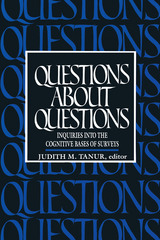
Questions About Questions
Inquiries into the Cognitive Bases of Surveys
Judith M. Tanur
Russell Sage Foundation, 1992
The social survey has become an essential tool in modern society, providing crucial measurements of social change, describing social life, and guiding government policy. But the validity of surveys is fragile and depends ultimately upon the accuracy of answers to survey questions. As our dependence on surveys grows, so too have questions about the accuracy of survey responses. Authored by a group of experts in cognitive psychology, linguistics, and survey research, Questions About Questions provides a broad review of the survey response problem. Examining the cognitive and social processes that influence the answers to questions, the book first takes up the problem of meaning and demonstrates that a respondent must share the survey researcher's intended meaning of a question if the response is to be revealing and informative. The book then turns to an examination of memory. It provides a framework for understanding the processes that can introduce errors into retrospective reports, useful guidance on when those reports are more or less trustworthy, and investigates techniques for the improvement of such reports. Questions about the rigid standardization imposed on the survey interview receive a thorough airing as the authors show how traditional survey formats violate the usual norms of conversational behavior and potentially endanger the validity of the data collected. Synthesizing the work of the Social Science Research Council's Committee on Cognition and Survey Research, Questions About Questions emphasizes the reciprocal gains to be achieved when insights and techniques from the cognitive sciences and survey research are exchanged. "these chapters provide a good sense of the range of survey problems investigated by the cognitive movement, the methods and ideas it draws upon, and the results it has yielded." —American Journal of Sociology
[more]
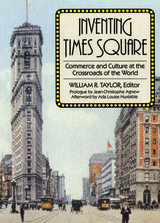
Inventing Times Square
Commerce and Culture at the Crossroads of the World
William R. Taylor
Russell Sage Foundation, 1991
Times Square, in its heyday, expressed American culture in the moment of vivid change. A stellar group of critics and scholars examines this transitional moment in Inventing Times Square, a study of the development of New York's central entertainment district. A fascinating visit to Times Square, from its christening in 1905 to its eventual decline after the Depression, the book explores the colorful configuration of institutions and cultural practices that propelled Times Square from a local and regional entertainment center to a national cultural marketplace. Changes in the economy, in religion, in leisure culture, and in aesthetics gave birth to a geographical space that fostered Vaudeville and Tin Pan Alley, Flo Ziegfeld and Billy Rose, the spectacle of the Hippodrome and the bright lights of the Great White Way. Out of this same place eventually came national network radio and many Hollywood films. Though conceived as a public space, Times Square was quickly transformed into a commercial center. Power brokers wielded their influence on a public ready to succumb to consumerism. Theatrical entertainment became a large-scale national business based in, and operated out of, Times Square. A new commercial aesthetic travelled with Joseph Urban from Vienna to Times Square to Palm Beach, bringing to society a sophisticated style that will forever say "Broadway." Times Square as the "center of the universe" had its darker sides as well, for it was the testing ground for a new morality. The packaging of sexuality on the stage gave it legitimacy on the streets, as hotels and sidewalks became the province of female prostitution, male hustling, and pornography. At the center of New York City, Times Square's commercial activities gave full rein to urban appetites and fantasies, and challenged and defied the norms of behavior that prevailed elsewhere in the city. Cultural history at its finest, Inventing Times Square portrays the vibrant convergence of social and economic forces on Forty-second Street.
[more]
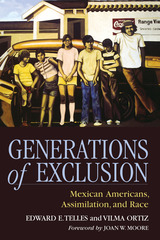
Generations of Exclusion
Mexican-Americans, Assimilation, and Race
Edward E. Telles
Russell Sage Foundation, 2008
Foreword by Joan W. Moore When boxes of original files from a 1965 survey of Mexican Americans were discovered behind a dusty bookshelf at UCLA, sociologists Edward Telles and Vilma Ortiz recognized a unique opportunity to examine how the Mexican American experience has evolved over the past four decades. Telles and Ortiz located and re-interviewed most of the original respondents and many of their children. Then, they combined the findings of both studies to construct a thirty-five year analysis of Mexican American integration into American society. Generations of Exclusion is the result of this extraordinary project. Generations of Exclusion measures Mexican American integration across a wide number of dimensions: education, English and Spanish language use, socioeconomic status, intermarriage, residential segregation, ethnic identity, and political participation. The study contains some encouraging findings, but many more that are troubling. Linguistically, Mexican Americans assimilate into mainstream America quite well—by the second generation, nearly all Mexican Americans achieve English proficiency. In many domains, however, the Mexican American story doesn't fit with traditional models of assimilation. The majority of fourth generation Mexican Americans continue to live in Hispanic neighborhoods, marry other Hispanics, and think of themselves as Mexican. And while Mexican Americans make financial strides from the first to the second generation, economic progress halts at the second generation, and poverty rates remain high for later generations. Similarly, educational attainment peaks among second generation children of immigrants, but declines for the third and fourth generations. Telles and Ortiz identify institutional barriers as a major source of Mexican American disadvantage. Chronic under-funding in school systems predominately serving Mexican Americans severely restrains progress. Persistent discrimination, punitive immigration policies, and reliance on cheap Mexican labor in the southwestern states all make integration more difficult. The authors call for providing Mexican American children with the educational opportunities that European immigrants in previous generations enjoyed. The Mexican American trajectory is distinct—but so is the extent to which this group has been excluded from the American mainstream. Most immigration literature today focuses either on the immediate impact of immigration or what is happening to the children of newcomers to this country. Generations of Exclusion shows what has happened to Mexican Americans over four decades. In opening this window onto the past and linking it to recent outcomes, Telles and Ortiz provide a troubling glimpse of what other new immigrant groups may experience in the future.
[more]
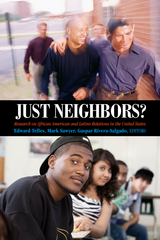
Just Neighbors?
Research on African American and Latino Relations in the United States
Edward Telles
Russell Sage Foundation, 2012
Blacks and Latinos have transformed the American city—together these groups now constitute the majority in seven of the ten largest cities. Large-scale immigration from Latin America has been changing U.S. racial dynamics for decades, and Latino migration to new destinations is changing the face of the American south. Yet most of what social science has helped us to understand about these groups has been observed primarily in relation to whites—not each other. Just Neighbors? challenges the traditional black/white paradigm of American race relations by examining African Americans and Latinos as they relate to each other in the labor market, the public sphere, neighborhoods, and schools. The book shows the influence of race, class, and received stereotypes on black-Latino social interactions and offers insight on how finding common ground may benefit both groups. From the labor market and political coalitions to community organizing, street culture, and interpersonal encounters, Just Neighbors? analyzes a spectrum of Latino-African American social relations to understand when and how these groups cooperate or compete. Contributor Frank Bean and his co-authors show how the widely held belief that Mexican immigration weakens job prospects for native-born black workers is largely unfounded—especially as these groups are rarely in direct competition for jobs. Michael Jones-Correa finds that Latino integration beyond the traditional gateway cities promotes seemingly contradictory feelings: a sense of connectedness between the native minority and the newcomers but also perceptions of competition. Mark Sawyer explores the possibilities for social and political cooperation between the two groups in Los Angeles and finds that lingering stereotypes among both groups, as well as negative attitudes among blacks about immigration, remain powerful but potentially surmountable forces in group relations. Regina Freer and Claudia Sandoval examine how racial and ethnic identity impacts coalition building between Latino and black youth and find that racial pride and a sense of linked fate encourages openness to working across racial lines. Black and Latino populations have become a majority in the largest U.S. cities, yet their combined demographic dominance has not abated both groups' social and economic disadvantage in comparison to whites. Just Neighbors? lays a much-needed foundation for studying social relations between minority groups. This trailblazing book shows that, neither natural allies nor natural adversaries, Latinos and African Americans have a profound potential for coalition-building and mutual cooperation. They may well be stronger together rather than apart.
[more]

Advances in Behavioral Finance
Richard H. Thaler
Russell Sage Foundation, 1993
Modern financial markets offer the real world's best approximation to the idealized price auction market envisioned in economic theory. Nevertheless, as the increasingly exquisite and detailed financial data demonstrate, financial markets often fail to behave as they should if trading were truly dominated by the fully rational investors that populate financial theories. These markets anomalies have spawned a new approach to finance, one which as editor Richard Thaler puts it, "entertains the possibility that some agents in the economy behave less than fully rationally some of the time." Advances in Behavioral Finance collects together twenty-one recent articles that illustrate the power of this approach. These papers demonstrate how specific departures from fully rational decision making by individual market agents can provide explanations of otherwise puzzling market phenomena. To take several examples, Werner De Bondt and Thaler find an explanation for superior price performance of firms with poor recent earnings histories in the tendencies of investors to overreact to recent information. Richard Roll traces the negative effects of corporate takeovers on the stock prices of the acquiring firms to the overconfidence of managers, who fail to recognize the contributions of chance to their past successes. Andrei Shleifer and Robert Vishny show how the difficulty of establishing a reliable reputation for correctly assessing the value of long term capital projects can lead investment analysis, and hence corporate managers, to focus myopically on short term returns. As a testing ground for assessing the empirical accuracy of behavioral theories, the successful studies in this landmark collection reach beyond the world of finance to suggest, very powerfully, the importance of pursuing behavioral approaches to other areas of economic life. Advances in Behavioral Finance is a solid beachhead for behavioral work in the financial arena and a clear promise of wider application for behavioral economics in the future.
[more]
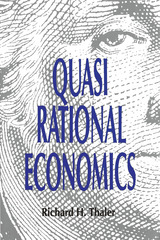
Quasi Rational Economics
Richard H. Thaler
Russell Sage Foundation, 1991
Standard economics theory is built on the assumption that human beings act rationally in their own self interest. But if rationality is such a reliable factor, why do economic models so often fail to predict market behavior accurately? According to Richard Thaler, the shortcomings of the standard approach arise from its failure to take into account systematic mental biases that color all human judgments and decisions.
[more]
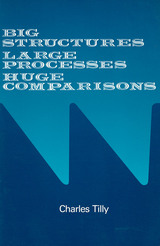
Big Structures, Large Processes, Huge Comparisons
Charles Tilly
Russell Sage Foundation, 1984
This bold and lively essay is one of those rarest of intellectual achievements, a big small book. In its short length are condensed enormous erudition and impressive analytical scope. With verve and self-assurance, it addresses a broad, central question: How can we improve our understanding of the large-scale processes and structures that transformed the world of the nineteenth century and are transforming our world today? Tilly contends that twentieth-century social theories have been encumbered by a nineteenth century heritage of "pernicious postulates." He subjects each misleading belief to rigorous criticism, challenging many standard social science paradigms and methodologies. As an alternative to those timeless, placeless models of social change and organization, Tilly argues convincingly for a program of concrete, historically grounded analysis and systematic comparison. To illustrate the strategies available for such research, Tilly assesses the works of several major practitioners of comparative historical analysis, making skillful use of this selective review to offer his own speculative, often unconventional accounts of our recent past. Historically oriented social scientists will welcome this provocative essay and its wide-ranging agenda for comparative historical research. Other social scientists, their graduate and undergraduate students, and even the interested general reader will find this new work by a major scholar stimulating and eminently readable. This is the second of five volumes commissioned by the Russell Sage Foundation to mark its seventy-fifth anniversary. "In this short, brilliant book Tilly suggests a way to think about theories of historical social change....This book should find attentive readers both in undergraduate courses and in graduate seminars. It should also find appreciative readers, for Tilly is a writer as well as a scholar." —Choice
[more]
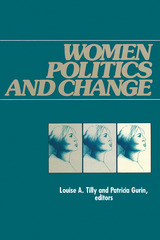
Women, Politics and Change
Louise A. Tilly
Russell Sage Foundation, 1990
Women, Politics, and Change, a compendium of twenty-three original essays by social historians, political scientists, sociologists, psychologists, and anthropologists, examines the political history of American women over the past one hundred years. Taking a broad view of politics, the contributors address voluntarism and collective action, women's entry into party politics through suffrage and temperance groups, the role of nonpartisan organizations and pressure politics, and the politicization of gender. Each chapter provides a telling example of how American women have behaved politically throughout the twentieth century, both in the two great waves of feminist activism and in less highly mobilized periods. "The essays are unusually well integrated, not only through the introductory material but through a similarity of form and extensive cross-references among them....in raising central questions about the forms, bases, and issues of women's politics, as well as change and continuity over time, Tilly, Gurin, and the individual scholars included in this collection have provided us with a survey of the latest research and an agenda for the future." —Contemporary Sociology "This book is a necessary addition to the scholar's bookshelf, and the student's curriculum." —Cynthia Fuchs Epstein, professor of sociology, City University of New York Graduate Center
[more]
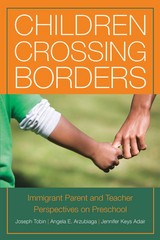
Children Crossing Borders
Immigrant Parent and Teacher Perspectives on Preschool for Children of Immigrants
Joseph Tobin
Russell Sage Foundation, 2013
In many school districts in America, the majority of students in preschools are children of recent immigrants. For both immigrant families and educators, the changing composition of preschool classes presents new and sometimes divisive questions about educational instruction, cultural norms and academic priorities. Drawing from an innovative study of preschools across the nation, Children Crossing Borders provides the first systematic comparison of the beliefs and perspectives of immigrant parents and the preschool teachers to whom they entrust their children. Children Crossing Borders presents valuable evidence from the U.S. portion of a landmark five-country study on the intersection of early education and immigration. The volume shows that immigrant parents and early childhood educators often have differing notions of what should happen in preschool. Most immigrant parents want preschool teachers to teach English, prepare their children academically, and help them adjust to life in the United States. Many said it was unrealistic to expect a preschool to play a major role in helping children retain their cultural and religious values. The authors examine the different ways that language and cultural differences prevent immigrant parents and school administrations from working together to achieve educational goals. For their part, many early education teachers who work with immigrant children find themselves caught between two core beliefs: on one hand, the desire to be culturally sensitive and responsive to parents, and on the other hand adhering to their core professional codes of best practice. While immigrant parents generally prefer traditional methods of academic instruction, many teachers use play-based curricula that give children opportunities to be creative and construct their own knowledge. Worryingly, most preschool teachers say they have received little to no training in working with immigrant children who are still learning English. For most young children of recent immigrants, preschools are the first and most profound context in which they confront the conflicts between their home culture and the United States. Policymakers and educators, however, are still struggling with how best to serve these children and their parents. Children Crossing Borders provides valuable research on these questions, and on the ways schools can effectively and sensitively incorporate new immigrants into the social fabric.
[more]
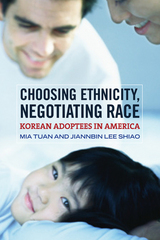
Choosing Ethnicity, Negotiating Race
Korean Adoptees in America
Mia Tuan
Russell Sage Foundation, 2011
Transnational adoption was once a rarity in the United States, but Americans have been choosing to adopt children from abroad with increasing frequency since the mid-twentieth century. Korean adoptees make up the largest share of international adoptions—25 percent of all children adopted from outside the United States—but they remain understudied among Asian American groups. What kind of identities do adoptees develop as members of American families and in a cultural climate that often views them as foreigners? Choosing Ethnicity, Negotiating Race is the only study of this unique population to collect in-depth interviews with a multigenerational, random sample of adult Korean adoptees. The book examines how Korean adoptees form their social identities and compares them to native-born Asian Americans who are not adopted. How do American stereotypes influence the ways Korean adoptees identify themselves? Does the need to explore a Korean cultural identity—or the absence of this need—shift according to life stage or circumstance? In Choosing Ethnicity, Negotiating Race, sixty-one adult Korean adoptees—representing different genders, social classes, and communities—reflect on early childhood, young adulthood, their current lives, and how they experience others' perceptions of them. The authors find that most adoptees do not identify themselves strongly in ethnic terms, although they will at times identify as Korean or Asian American in order to deflect questions from outsiders about their cultural backgrounds. Indeed, Korean adoptees are far less likely than their non-adopted Asian American peers to explore their ethnic backgrounds by joining ethnic organizations or social networks. Adoptees who do not explore their ethnic identity early in life are less likely ever to do so—citing such causes as general aversion, lack of opportunity, or the personal insignificance of race, ethnicity, and adoption in their lives. Nonetheless, the choice of many adoptees not to identify as Korean or Asian American does not diminish the salience of racial stereotypes in their lives. Korean adoptees must continually navigate society's assumptions about Asian Americans regardless of whether they chose to identify ethnically. Choosing Ethnicity, Negotiating Race is a crucial examination of this little-studied American population and will make informative reading for adoptive families, adoption agencies, and policymakers. The authors demonstrate that while race is a social construct, its influence on daily life is real. This book provides an insightful analysis of how potent this influence can be—for transnational adoptees and all Americans.
[more]
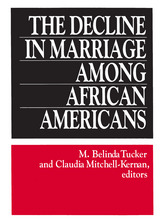
The Decline in Marriage Among African Americans
Causes, Consequences, and Policy Implications
M. Belinda Tucker
Russell Sage Foundation, 1995
In a time when the American family has undergone dramatic evolution, change among African Americans has been particularly rapid and acute. African Americans now marry later than any other major ethnic group, and while in earlier decades nearly 95 percent of black women eventually married, today 30 percent are expected to remain single. The black divorcee rate has increased nearly five-fold over the last thirty years, and is double the rate of the general population. The result, according to The Decline in Marriage Among African Americans, is a greater share of family responsibilities being borne by women, an increased vulnerability to poverty and violence, and an erosion of community ties. The original, often controversial, research presented in this book links marital decline to a pivotal drop in the pool of marriageable black males. Increased joblessness has robbed many black men of their economic viability, rendering them not only less desirable as mates, but also less inclined to take on the responsibility of marriage. Higher death rates resulting from disease, poor health care, and violent crime, as well as evergrowing incarceration rates, have further depleted the male population. Editors M. Belinda Tucker and Claudia Mitchell-Kernan and the contributors take a hard look at the effects of chronic economic instability and cultural attitudes toward the male role as family provider. Their cogent historical analyses suggest that the influence of external circumstances over marriage preferences stems in large part from the profoundly damaging experience of slavery. This book firmly positions declining marriage within an ominous cycle of economic and social erosion. The authors propose policies for relieving the problems associated the changing marital behavior, focusing on support for single parent families, public education, and increased employment for African American men.
[more]

Surveying Subjective Phenomena
Charles Turner
Russell Sage Foundation, 1984
In January 1980 a panel of distinguished social scientists and statisticians assembled at the National Academy of Sciences to begin a thorough review of the uses, reliability, and validity of surveys purporting to measure such subjective phenomena as attitudes, opinions, beliefs, and preferences. This review was prompted not only by the widespread use of survey results in both academic and non-academic settings, but also by a proliferation of apparent discrepancies in allegedly equivalent measurements and by growing public concern over the value of such measurements. This two-volume report of the panel's findings is certain to become one of the standard works in the field of survey measurement. Volume I summarizes the state of the art of surveying subjective phenomena, evaluates contemporary measurement programs, examines the uses and abuses of such surveys, and candidly assesses the problems affecting them. The panel also offers strategies for improving the quality and usefulness of subjective survey data. In volume II, individual panel members and other experts explore in greater depth particular theoretical and empirical topics relevant to the panel's conclusions. For social scientists and policymakers who conduct, analyze, and rely on surveys of the national state of mind, this comprehensive and current review will be an invaluable resource.
[more]

Surveying Subjective Phenomena
Charles Turner
Russell Sage Foundation, 1984
In January 1980 a panel of distinguished social scientists and statisticians assembled at the National Academy of Sciences to begin a thorough review of the uses, reliability, and validity of surveys purporting to measure such subjective phenomena as attitudes, opinions, beliefs, and preferences. This review was prompted not only by the widespread use of survey results in both academic and non-academic settings, but also by a proliferation of apparent discrepancies in allegedly equivalent measurements and by growing public concern over the value of such measurements. This two-volume report of the panel's findings is certain to become one of the standard works in the field of survey measurement. Volume I summarizes the state of the art of surveying subjective phenomena, evaluates contemporary measurement programs, examines the uses and abuses of such surveys, and candidly assesses the problems affecting them. The panel also offers strategies for improving the quality and usefulness of subjective survey data. In volume II, individual panel members and other experts explore in greater depth particular theoretical and empirical topics relevant to the panel's conclusions. For social scientists and policymakers who conduct, analyze, and rely on surveys of the national state of mind, this comprehensive and current review will be an invaluable resource.
[more]

Surveying Subjective Phenomena
Charles Turner
Russell Sage Foundation, 1984
In January 1980 a panel of distinguished social scientists and statisticians assembled at the National Academy of Sciences to begin a thorough review of the uses, reliability, and validity of surveys purporting to measure such subjective phenomena as attitudes, opinions, beliefs, and preferences. This review was prompted not only by the widespread use of survey results in both academic and non-academic settings, but also by a proliferation of apparent discrepancies in allegedly equivalent measurements and by growing public concern over the value of such measurements. This two-volume report of the panel's findings is certain to become one of the standard works in the field of survey measurement. Volume I summarizes the state of the art of surveying subjective phenomena, evaluates contemporary measurement programs, examines the uses and abuses of such surveys, and candidly assesses the problems affecting them. The panel also offers strategies for improving the quality and usefulness of subjective survey data. In volume II, individual panel members and other experts explore in greater depth particular theoretical and empirical topics relevant to the panel's conclusions. For social scientists and policymakers who conduct, analyze, and rely on surveys of the national state of mind, this comprehensive and current review will be an invaluable resource.
[more]
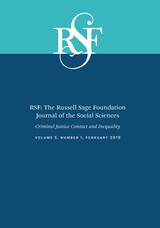
RSF
The Russell Sage Foundation Journal of the Social Sciences: Criminal Justice Contact and Inequality
Kristin Turney
Russell Sage Foundation, 2019
Policymakers and the public are increasingly aware of the dire consequences of mass incarceration for millions of individuals and families. However, incarceration is only one component of the larger criminal justice system. Many more individuals have contact with the criminal justice system through arrests, misdemeanor convictions, and the accumulation of fines and fees, without spending time behind bars. In this issue of RSF, editors sociologist Kristin Turney and criminologist Sara Wakefield and a multi-disciplinary group of authors analyze how the range of criminal justice contact create, maintain, and exacerbate inequalities. Contributors show that the vast scope of the criminal justice system disproportionately targets low-income and minority populations, with serious consequences across the life course.
Several articles explore the ramifications of ongoing surveillance. Amanda Geller and Jeffrey Fagan survey adolescents who come into contact with law enforcement and find that intrusive police stops contribute to heightened cynicism toward the legal system, suggesting that aggressive policing weakens youths’ deference to law and legal authorities. Robert Vargas and coauthors study police-dispatcher radio communications and show that data breaches where the dispatcher reveals confidential identifying information about individuals reporting criminal activity are more common in predominantly black and Latino neighborhoods. Because police scanners are accessible by the public, these breaches make residents more vulnerable to criminals, gangs, or predatory businesses. Other contributors explore the effects of criminal justice contact on family life. Frank Edwards examines how families’ interactions with the child welfare system differ by race and shows that black and Native American families living in counties with high arrest rates are more likely to be investigated for child abuse and neglect than similar families in counties with low arrest rates. For whites, by contrast, poverty—rather than arrests—is the strongest predictor for contact with the child welfare system. In an ethnographic study of bail bond agents, Joshua Page and coauthors find that this industry uses predatory methods to extract bail from the female relatives and partners of incarcerated individuals, increasing financial hardship particularly among low-income women of color.
The criminal justice system is an institution of social stratification in the United States. By documenting how regimes of punishment and surveillance extend far beyond prison, this issue advances our understanding of how social inequalities are perpetuated by a supposedly impartial system.
Several articles explore the ramifications of ongoing surveillance. Amanda Geller and Jeffrey Fagan survey adolescents who come into contact with law enforcement and find that intrusive police stops contribute to heightened cynicism toward the legal system, suggesting that aggressive policing weakens youths’ deference to law and legal authorities. Robert Vargas and coauthors study police-dispatcher radio communications and show that data breaches where the dispatcher reveals confidential identifying information about individuals reporting criminal activity are more common in predominantly black and Latino neighborhoods. Because police scanners are accessible by the public, these breaches make residents more vulnerable to criminals, gangs, or predatory businesses. Other contributors explore the effects of criminal justice contact on family life. Frank Edwards examines how families’ interactions with the child welfare system differ by race and shows that black and Native American families living in counties with high arrest rates are more likely to be investigated for child abuse and neglect than similar families in counties with low arrest rates. For whites, by contrast, poverty—rather than arrests—is the strongest predictor for contact with the child welfare system. In an ethnographic study of bail bond agents, Joshua Page and coauthors find that this industry uses predatory methods to extract bail from the female relatives and partners of incarcerated individuals, increasing financial hardship particularly among low-income women of color.
The criminal justice system is an institution of social stratification in the United States. By documenting how regimes of punishment and surveillance extend far beyond prison, this issue advances our understanding of how social inequalities are perpetuated by a supposedly impartial system.
[more]
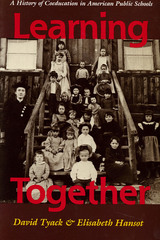
Learning Together
A History of Coeducation in American Public Schools
David Tyack
Russell Sage Foundation, 1992
Now available in paperback, this award-winning book provides a comprehensive history of gender policies and practices in American public schools. David Tyack and Elisabeth Hansot explore the many factors that have shaped coeducation since its origins. At the very time that Americans were creating separate spheres for adult men and women, they institutionalized an education system that brought boys and girls together. How did beliefs about the similarities and differences of boys and girls shape policy and practice in schools? To what degree did the treatment of boys and girls differ by class, race, region, and historical period? Debates over gender policies suggest that American have made public education the repository of their hopes and anxieties about relationships between the sexes. Thus, the history of coeducation serves as a window not only on constancy and change in gender practices in the schools but also on cultural conflicts about gender in the broader society. "Learning Together presents a rich and exhaustive search through [the] 'tangled history' of gender and education that links both the silences and the debates surrounding coeducation to the changing roles of women and men in our society....It is the generosity and capaciousness of Tyack and Hansot's scholarship that makes Learning Together so important a book." —Science
[more]
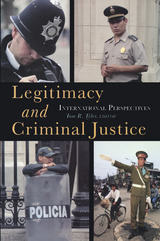
Legitimacy and Criminal Justice
An International Perspective
Tom R. Tyler
Russell Sage Foundation, 2007
The police and the courts depend on the cooperation of communities to keep order. But large numbers of urban poor distrust law enforcement officials. Legitimacy and Criminal Justice explores the reasons that legal authorities are or are not seen as legitimate and trustworthy by many citizens. Legitimacy and Criminal Justice is the first study of the perceived legitimacy of legal institutions outside the U.S. The authors investigate relations between courts, the police, and communities in the U.K., Western Europe, South Africa, Slovenia, South America, and Mexico, demonstrating the importance of social context in shaping those relations. Gorazd Meško and Goran Klemencic examine Slovenia's adoption of Western-style "community policing" during its transition to democracy. In the context of Slovenia's recent Communist past—when "community policing" entailed omnipresent social and political control—citizens regarded these efforts with great suspicion, and offered little cooperation to the police. When states fail to control crime, informal methods of law can gain legitimacy. Jennifer Johnson discusses an extra-legal policing system carried out by farmers in Guerrero, Mexico—complete with sentencing guidelines and initiatives to reintegrate offenders into the community. Feeling that federal authorities were not prosecuting the crimes that plagued their province, the citizens of Guerrero strongly supported this extra-legal arrangement, and engaged in massive protests when the central government tried to suppress it. Several of the authors examine how the perceived legitimacy of the police and courts varies across social groups. Graziella Da Silva, Ignacio Cano, and Hugo Frühling show that attitudes toward the police vary greatly across social classes in harshly unequal societies like Brazil and Chile. And many of the authors find that ethnic minorities often display greater distrust toward the police, and perceive themselves to be targets of police discrimination. Indeed, Hans-Jöerg Albrecht finds evidence of bias in arrests of the foreign born in Germany, which has fueled discontent among Berlin's Turkish youth. Sophie Body-Gendrot points out that mutual hostility between police and minority communities can lead to large-scale violence, as the Parisian banlieu riots underscored. The case studies presented in this important new book show that fostering cooperation between law enforcement and communities requires the former to pay careful attention to the needs and attitudes of the latter. Forging a new field of comparative research, Legitimacy and Criminal Justice brings to light many of the reasons the law's representatives succeed—or fail—in winning citizens' hearts and minds. A Volume in the Russell Sage Foundation Series on Trust
[more]

Trust in the Law
Encouraging Public Cooperation with the Police and Courts
Tom R. Tyler
Russell Sage Foundation, 2002
Public opinion polls suggest that American's trust in the police and courts is declining. The same polls also reveal a disturbing racial divide, with minorities expressing greater levels of distrust than whites. Practices such as racial profiling, zero-tolerance and three-strikes laws, the use of excessive force, and harsh punishments for minor drug crimes all contribute to perceptions of injustice. In Trust in the Law, psychologists Tom R. Tyler and Yuen J. Huo present a compelling argument that effective law enforcement requires the active engagement and participation of the communities it serves, and argue for a cooperative approach to law enforcement that appeals to people's sense of fair play, even if the outcomes are not always those with which they agree. Based on a wide-ranging survey of citizens who had recent contact with the police or courts in Oakland and Los Angeles, Trust in the Law examines the sources of people's favorable and unfavorable reactions to their encounters with legal authorities. Tyler and Huo address the issue from a variety of angles: the psychology of decision acceptance, the importance of individual personal experiences, and the role of ethnic group identification. They find that people react primarily to whether or not they are treated with dignity and respect, and the degree to which they feel they have been treated fairly helps to shape their acceptance of the legal process. Their findings show significantly less willingness on the part of minority group members who feel they have been treated unfairly to trust the motives to subsequent legal decisions of law enforcement authorities. Since most people in the study generalize from their personal experiences with individual police officers and judges, Tyler and Huo suggest that gaining maximum cooperation and consent of the public depends upon fair and transparent decision-making and treatment on the part of law enforcement officers. Tyler and Huo conclude that the best way to encourage compliance with the law is for legal authorities to implement programs that foster a sense of personal involvement and responsibility. For example, community policing programs, in which the local population is actively engaged in monitoring its own neighborhood, have been shown to be an effective tool in improving police-community relationships. Cooperation between legal authorities and community members is a much discussed but often elusive goal. Trust in the Law shows that legal authorities can behave in ways that encourage the voluntary acceptance of their directives, while also building trust and confidence in the overall legitimacy of the police and courts. A Volume in the Russell Sage Foundation Series on Trust
[more]
READERS
Browse our collection.
PUBLISHERS
See BiblioVault's publisher services.
STUDENT SERVICES
Files for college accessibility offices.
UChicago Accessibility Resources
home | accessibility | search | about | contact us
BiblioVault ® 2001 - 2024
The University of Chicago Press









